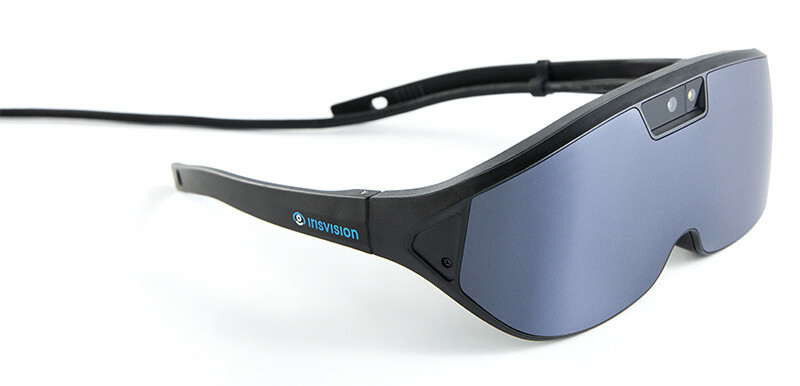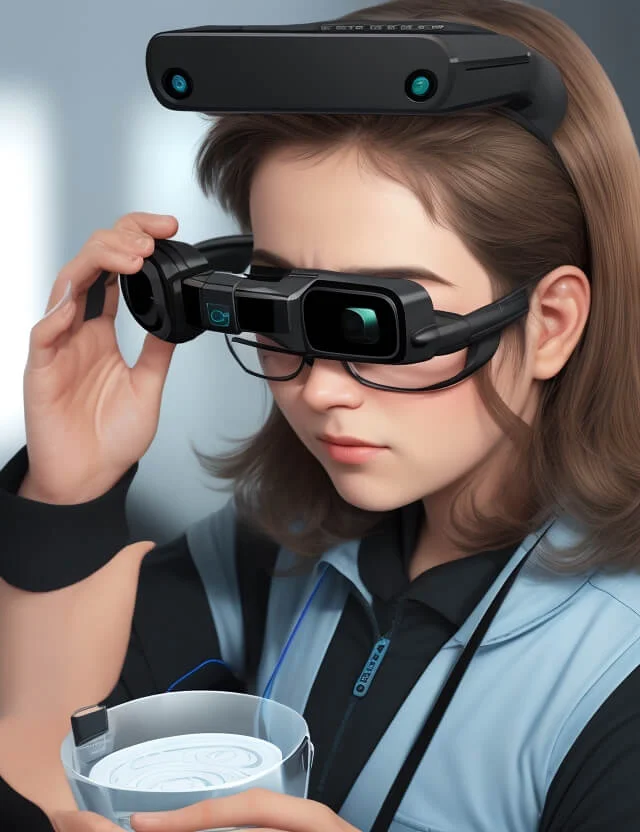Voice-Activated Assistive Devices: Empowering the Visually Impaired Through Innovation
Wiki Article
Discover Advanced Assistive Tools for Individuals With Aesthetic Problems
The landscape of assistive innovation for individuals with visual impairments is developing quickly, offering an array of ingenious devices that enhance freedom and engagement. From wise glasses that flawlessly combine aesthetic input with auditory assistance to advanced navigation applications that redefine spatial awareness, these devices are improving opportunities.Smart Glasses Innovations
Smart glasses stand for a significant advancement in assistive innovation for people with visual problems. These innovative tools incorporate various functions created to boost the user's communication with their environment. Furnished with sensing units and cameras, wise glasses can record real-time visual info, which is then processed and shared to the customer with sound feedback or haptic feelings. This performance permits people to receive immediate descriptions of their surroundings, enhancing their capacity to browse and involve with the globe.
In addition, innovations in fabricated intelligence have additionally improved the capacities of clever glasses. Equipment learning algorithms can recognize faces, reviewed message, and identify things, making them invaluable tools for daily tasks. Users can receive auditory hints that supply context concerning their environment, fostering independence and self-confidence.
In addition, the ergonomic layout and light-weight nature of numerous smart glasses make them suitable for prolonged usage, making certain comfort while enhancing performance. As these gadgets remain to advance, they hold the possible to change the means people with aesthetic disabilities experience their day-to-days live, connecting the gap between availability and modern technology. The continuous r & d in this field pledge to expand the possibilities for wise glasses, making them an essential part of contemporary assistive tools.
Navigation Apps and Devices
Numerous navigation apps and devices have become crucial resources for people with aesthetic disabilities, significantly enhancing their capacity to go across unknown settings. These technologies take advantage of GPS performance, audio signs, and real-time information to give customers with accurate navigating help.One noticeable example is the Aira app, which links individuals to trained representatives that can offer aesthetic summaries of surroundings and navigation guidance with an online video feed. This service improves the individual's spatial recognition and confidence while browsing. An additional noteworthy tool is Seeing Eye GPS, which offers voice-guided navigation and points of interest, allowing individuals to access important details concerning their environments.

As technology remains to advance, the growth of a lot more sophisticated navigating tools guarantees to more encourage individuals with visual impairments, helping with smooth movement and assimilation into diverse settings. Such technologies contribute in promoting an extra inclusive society.
Braille Technology Improvements
Recently, innovations in Braille innovation have considerably changed just how individuals with visual disabilities gain access to info and involve with the globe around them. The advancement of portable Braille screens has transformed reading by permitting users to connect wirelessly to mobile phones, computers, and tablet computers. These devices transform text right into Braille in real-time, making it possible for seamless interaction with digital material.
Furthermore, cutting-edge Braille printers have emerged, enhancing the production of responsive materials. Modern embossers are quicker and a lot more efficient, permitting the fast production of Braille documents and educational products. This efficiency minimizes the time and cost connected with creating Braille sources, making them a lot more easily accessible to schools and organizations.
Additionally, the integration of Braille with other technologies, such as expert system and device knowing, has opened up brand-new opportunities for personalized learning experiences. Voice recognition and synthesis technologies can match Braille, giving an inclusive technique to information circulation.
As the need for comprehensive education and learning and work environment environments expands, these technological advancements play a critical role in empowering people with visual disabilities, guaranteeing they have equal accessibility to info and possibilities in numerous elements of life.
Wearable Devices for Self-reliance
An expanding selection of wearable devices is enhancing freedom for people with aesthetic disabilities, using ingenious solutions that boost navigating and daily living. Braille displays and notetakers. These tools utilize advanced modern technologies to provide real-time responses and support, promoting autonomy in different environments
Wearable technology also includes smartwatches that can be configured with availability functions, allowing customers to obtain alerts, track their places, and even ask for assistance with the touch of a switch. Moreover, some gadgets integrate artificial knowledge to examine the environment, offering audio summaries of close-by objects or people.
Voice-Activated Assistive Solutions
Leveraging voice-activated assistive options has changed the landscape of assistance for individuals with aesthetic disabilities, providing hands-free interaction and access to a variety of jobs. These technologies utilize all-natural language handling and expert system to allow users to execute daily tasks with basic voice commands.Furthermore, recent innovations in voice recognition precision have enhanced the user experience substantially, fitting diverse accents and speech patterns. This inclusivity makes certain that more individuals can take advantage of these modern technologies, promoting a greater sense of autonomy.
Final Thought
Finally, the growth of innovative assistive tools significantly improves the freedom and lifestyle for individuals with visual impairments. Innovations such as smart glasses, navigation apps, Braille innovation, wearable devices, and voice-activated services collectively promote a more comprehensive setting. These modern technologies encourage customers to navigate their environments with self-confidence and involve even more totally with the world, ultimately promoting better accessibility and equal possibilities for people dealing with visual difficulties.The landscape of assistive modern technology for people with aesthetic impairments is developing quickly, offering an array of cutting-edge gadgets that enhance autonomy and engagement.Smart glasses represent a substantial innovation in assistive modern technology for people with aesthetic disabilities. As these devices continue to evolve, they hold the prospective to transform the way people with visual impairments experience their daily lives, bridging the gap between access and modern technology.In recent years, improvements in Braille modern technology have significantly changed exactly how people with aesthetic impairments accessibility info and engage with the globe around them. These modern technologies equip users to navigate their environments with self-confidence and involve more totally with the world, eventually promoting higher ease of access and equal chances for people dealing with aesthetic difficulties.
Report this wiki page